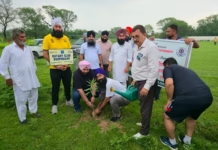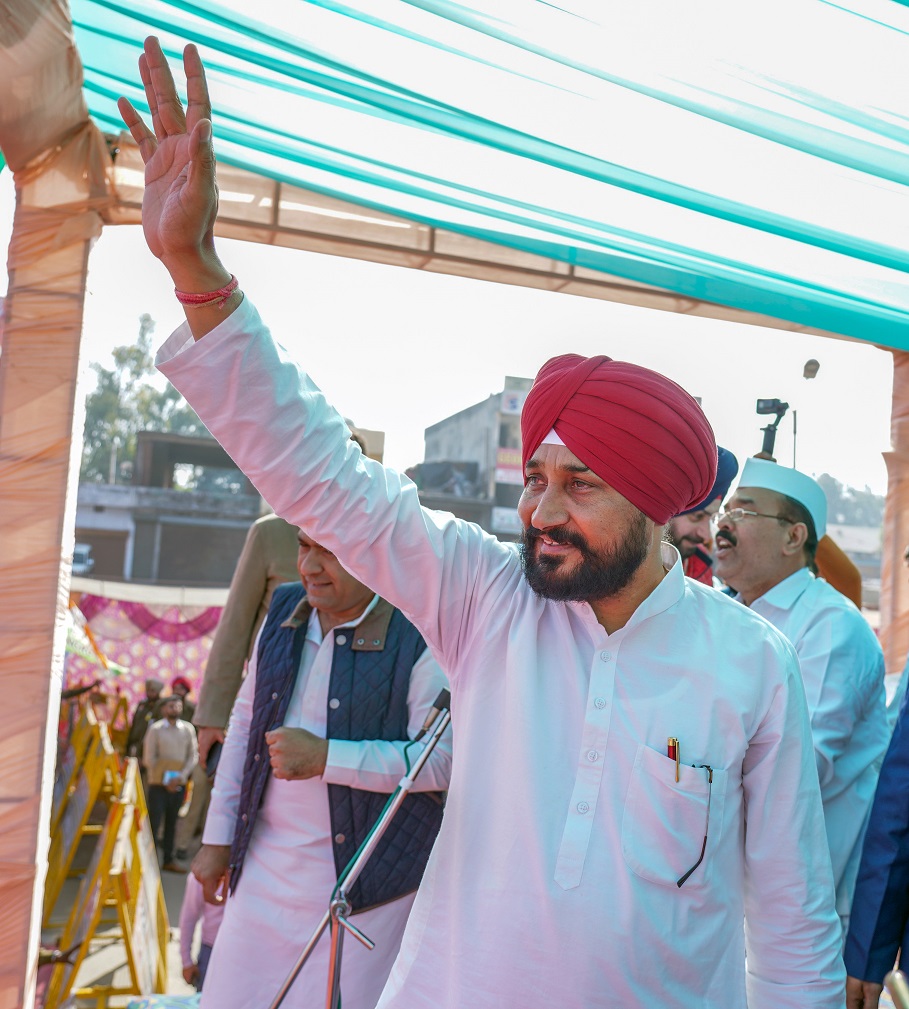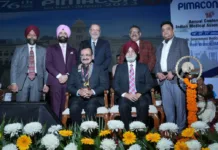International Year of the Millets –Gurudwaras can be inspired to shift to organic langar including millets in the menu -Puri
Jaswant Singh Puri/ October 18,2023
Spearheaded by the Prime Minister, the Government of India sponsored the proposal for International Year of Millets (IYM) 2023 which was accepted by the United Nations General Assembly (UNGA). The Prime Minister of India Narendra Modi has shared his vision to make IYM 2023, a ‘People’s Movement’ alongside positioning India as the ‘Global Hub for Millets’.
Punjab state being a state of gurudwaras can be inspired to shift to organic langar including millets in the menu. Markfed can be entrusted with the responsibility to create storage facilities. So, farmers can be encouraged to cultivate millets for the good of human beings.States like Andhra Pradesh and Karnataka have encouraged the cultivation of millets.
Millets used to be staple food for many communities in India till the onset of Green Revolution. However, the Green Revolution technology and policy environment imparted an impetus to wheat and rice in the 1970s. Thus a bias developed among the people against millets which were considered coarse and inferior cereals. Consequently, millet consumption declined and hence their supplies also dropped. But with 2023 being celebrated as the UN International Year of Millets, the focus is once again back to rediscover the magic of these nutritious grains. It can effectively address the scourge of hidden hunger by creating nutrient-sensitive and environmentally sustainable local food value chains.
In fact, millets are not coarse and unhealthy grains. These are nutritionally rich and climate resilient crops. Since these super foods did not form a part of the European and American diets, these were ignored. The millet grains that include bajra, jowar, ragi and others, can be cultivated in the dry and rainfed regions. But the rediscovery of millets has opened up the avenues for a diversified food and farming system. A number of campaigns have been initiated by civil society groups led by the Millets Network of India and others to push these grains among the masses. Punjab can sow the seeds of millets revolution as it can trigger a huge demand for millets in its crop diversification scheme.
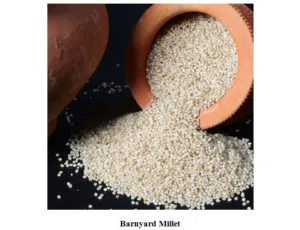
Even schools, hospitals and nes can encourage their cultivation. To promote their cultivation, it was agreed in principle in the G-20 Meeting held in Chandigarh very recently to start a collaborative research initiative on traditional crops like millets. These were christened as “Maharishi” by India in the meeting of the Agricultural Working Group (AWG). There is a need for sustainable agriculture with a climate smart approach. Manoj Ahuja, Secretary, Department of Agriculture and Farmer Welfare Union Ministry of Agriculture stated that “the scale of research that is needed in the traditional crops that lie in millets has not been achieved. More collaboration is needed among countries for this research”. It was purposed that Indian Institute of Millets Research (IIMR) with its headquarters at Hyderabad be developed as a Global Centre of excellence in millet research. It is a premier research institute engaged in strategic research on sorghum and other millets under Indian Council of Agricultural Research (ICAR).
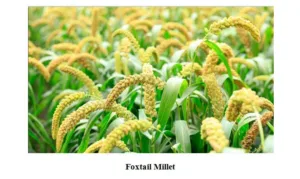
Policies promoting millets can certainly work positively if farmers’ incentives are safeguarded. It is a smart idea because increasing the production and domestic consumption of millets makes sense from the perspectives of nutrition and environment. But there is a need to create an approach to move towards millets and realise the goal of popularizing millets.
We are what we consume. We will come to our own nature very well if we look deeply into how much and what we consume every day. In modern life, people think their bodies belong to them. But to keep it healthy, millet grains are very nutritious. We need to go against the wheat and rice bias and adopt the use of millets as these are dense in nutrients. The consumption of millets reduces the iron deficiency, anaemia and risk of type II diabetes. Their intake also helps to reduce obesity, tackles calcium deficiency and hyperlipidemia. In India, 52% pregnant women and 67% of children under five suffer from anaemia. This can be addressed by replacing some quantity of rice and wheat in the diet by Bajra and ragi. Nature has blessed millets with several qualities that are much useful for both mankind and nature.
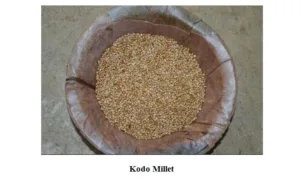
Millets are the least water demanding crops and thrive in harsh environments. These can withstand various stresses like rise in temperature, drought etc. There is a renewed interest in millets as the awareness about their health and nutrition utility has spread. It has restricted the intake of rice and wheat since Government of India and some states have taken some initiatives in the last decade to promote millets. Millets were officially declared as Nutri Cereals in 2018.
The Government of India is trying seriously to increase the consumption of millets as well as their production. The budget of 2023 has put millets on a graceful pedestal by designating them as “Shree Anna”. But millet production requires processing before use which is a complex phenomenon.
Millets bring a tremendous nutritional and environmental gains. The Commission for Agricultural Costs and Prices (CACP) should modify the pricing system and adopt the principles of ecosystem services. Shifting back to millets, besides pulses and oilseeds is the finest way.
Millets have been an integral part of our diet for centuries. These are nutritious, good for environment with low water and input requirement. With the aim to create awareness and increase production of millets, General Assembly of the United Nations at its 75th session in March, 2021 at the behest of the Government of India, declared 2023 as the International Year of Millets.
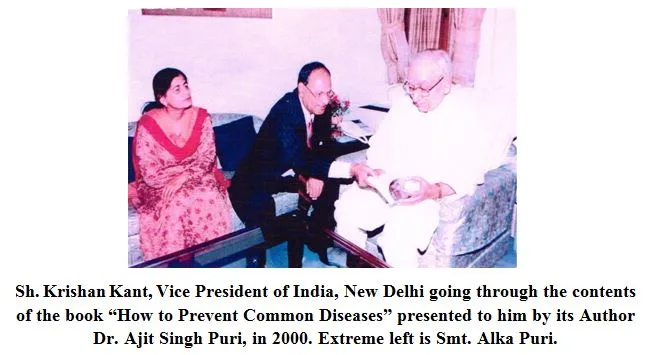
The year 2023 will also promote the sustainable production of millets. These contain a diverse group of cereals like pearl, proso, foxtail, barnyard, kodo, browntop, guinea millets, fonio, sorghum and teff. Greater millet production can support the livelihood of smallholder farmers and can provide lucrative jobs for men and women. These can boost economic growth and create new avenues of income. That is why, millets have been making a comeback in India and across the world. Mumbai based holistic nutrition expert Amita Gadre writes: “Millets are not just naturally gluton-free, they also have much higher levels of iron and calcium than processed wheat and rice. They are also very rich in fiber, which makes them a good choice for those trying to control blood sugar or manage insulin resistance”.
Lands that cannot sustain anything else can still have millets growing on them. These can be grown between major crop seasons and enrich the soil with their own set of micronutrients.
Dr. Ajit Singh Puri, MD, D.Sc. (Honoris Causa), FICP, FCAI, FICA has written a health guide ‘Speaking of How to Prevent Common Diseases’ to enhance the level of mass awareness in relation to the early detection, prevention and treatment of common but lethal diseases. The book has the distinction to carry a ‘Foreword’ by Lord Walton, former President, British Medical Association, Royal Society of Medicine and General Medical Council; former Warden, Green College, Oxford; former President, World Federation of Neurology. The health guide carries an important chapter on ‘Urgent Dietary Measures for the Prevention of Common Serious Diseases’ and recommends high fibre food as given below:
Urgent Dietary Measures
Condiments and spices : Permissible in moderation. Their excessive use causes stimulation of the appetite, and may cause overeating.
High fibre food : Strongly recommended including for prevention of cancer. It includes:
- Whole wheat, gram, maize or similar flour (bran to be taken along with it).
- Whole pulses.
- Unpolished rice.
- Plenty of green vegetables – cooked or salad.
- Porridge (dalia), corn flakes, oats, preferably with skimmed milk.
- Roasted grams.
- Sprouted beans, grams, peas, moong etc. All edible as well as sproutable legumes, grains and seeds may be used.
Cheese : Cheddar cheese commonly available in tins to be avoided.
Cottage cheese : May be taken since it is prepared from skimmed milk.
Curds and yoghurt : Prepared from skimmed milk permissible.
Oils : Mustard oil is ideal for consumption.
Butter/ghee : Intake of cow ghee is recommended.
It is worth noting that in G-20 Summit organised in June 2023, Millets were served in the Taj Mahal Hotel, New Delhi. A special menu featuring millets with the diverse flavours of lip-smacking Indian delicacies was served to the delegates who attended the G-20 Summit in Delhi.
It is really nice that millet recipes and dishes have become important in famous restaurants and hotels. But these need to be presented in a form that is more acceptable for today’s generation instead of carrying on to traditional recipes. So, millets are good not only for the consumers but for the farmers and the environment also.
When Alka Puri, wife of Dr. Ajit Singh Puri and mother of Dr. Jaswant Singh Puri was the Secretary, Ladies Club, Punjabi University, Patiala during the tenure of Vice-Chancellor Dr. S.S. Johal, she promoted the cause of Jawar and Bajra recipes and maize chapattis.

Note: The views expressed are personal. This article is dedicated to Smt. Alka Puri the wife of Dr. Ajit Singh Puri and mother of Jaswant Singh Puri. Smt. Alka Puri was an earnest social worker. She worked selflessly with Bibi Amtus Salam, the adopted daughter of Mahatma Gandhi.



